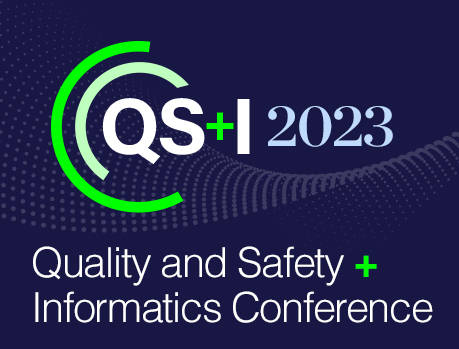An Essential Roadmap for AI in Radiology

Categories
July 7, 2022 |
Valeria Makeeva, MD
Chang suggested radiomics, using AI algorithms to extract features from images that would be invisible to the naked eye, as the tool radiology needs to improve the quality of our output — to be more contributory, to be more collaborative, and to go beyond the message-in-a-bottle style reports in order provide more relevant, actionable information to referring providers. In his keynote, he said that by implementing a system supporting radiomics, what he referred to as a human-machine collaborative model, we could not only improve efficiency, but also report quality.
The Gartner Hype Cycle
Capitated shared risk models demand that radiologists do more with fewer resources. That demand has created an impetus for new technology to increase productivity and efficiency. The Gartner Hype Cycle explains how technology evolves over time: A “Technology Trigger” causes a rapid increase in technology visibility, ultimately reaching a “Peak of Inflated Expectations,” then declining in visibility to the “Trough of Disillusionment,” followed by increasing at a more moderate rate on the “Slope of Enlightenment,” before finally reaching the “Plateau of Productivity.”
Five years ago, many said radiology would soon to be replaced by AI. Counter to these predictions, however, clinical deployment of AI is still in its early stages. We are currently in the “Trough of Disillusionment,” in part due to lack of enterprise strategic perspective and lack of institutional AI governance. A 2020 ACR Data Science Institute Artificial Intelligence Survey published in the Journal of American College of Radiology (JACR) in 2021 noted that:
• Only 30% of radiologists use AI clinically in current practice.
• Over 70% of respondents have no plans to pay for AI.
• 80% of those not using AI see “no benefit.”
In fact, contrary to our roots in technology adoption, radiologists are late consumers of AI relative to other business verticals.
Why We’re in the Trough of Disillusionment
There are four major reasons why we’re in the trough:
1. Trust in AI performance and generalizability is lacking. Validation of AI systems has been challenging given that “deep” in “deep learning” also means “obscure.” Validation methods have been considered statistically “lightweight,” and we cannot always be confident these models can be “generalized.” Furthermore, most image-based diagnostic radiology algorithms experience diminished performance in the real world.
2. Use cases are considered “nice to have” but not “must haves.” When AI applications in radiology are driven by data availability and not by use cases, it creates a Catch-22: Most institutions will not invest in the needed IT infrastructure without a “killer use case,” but the “killer use case” cannot be created without the needed IT infrastructure. Unfortunately, suboptimal IT infrastructure is a constraint in the real-world adoption of AI at the levels of development, validation, implementation, support, and governance. We will need to select use cases that consider C-Suite priorities of return on investment (ROI), total cost of ownership (TCO), and regulatory requirements.
3. Often existing workflow cannot optimally leverage AI. Machines and humans are meeting “at the edges” and working separately instead of together, which severely underleverages AI potential. The models we have do not support the needed AI lifecycle requirements, such as continuous learning and robust quality assurance needs like mitigation of AI drift.
4. Most institutions lack the capability to support and manage AI in a scalable and sustainable manner. Enterprise AI governance is not yet implemented at most institutions.
How Do We Get on the Slope of Enlightenment?
The “Slope of Enlightenment” can be accessed by building infrastructure allowing AI to function optimally. Radiology IT infrastructure and integration are operating on a much less sophisticated level than most other enterprise integration models. Most other models use Service Oriented Architecture (SOA), a style of software design that provides services through a communication protocol over a network.
Radiology IT infrastructure, however, is defined circa 1990s. Connecting an application to data or functionality from another system necessitates complex, point-to-point integration. Without the middle business logic layer of SOA, current infrastructure depends on the radiologist to integrate disparate sets of information, such as from PACS and the EMR. This places a huge burden on all involved in the process: the radiologist, IT developers, and IT system maintenance.
To build workflow integration, AI cannot continue to be a “peripheral” system to existing legacy IT systems. Existing systems must support AI life cycle requirements, like continuous learning and drift mitigation strategies. Image management and PACS need to be re-defined and disrupted to achieve intelligent optimized workflow orchestration.
Simply put, radiology practices and academic centers are now required to compete in an environment where the goals are measurable. Improvements in efficiency, productivity, quality, and safety need to come quickly.
Valeria Makeeva, MD, Informatics and Neuroradiology Fellow at the University of Alabama at Birmingham
An Essential Roadmap for AI in Radiology
-

You may also like
Harmonizing Horizons: Reflections from the ACR Quality and Safety + Informatics Conference 2023November 10, 2023 | Dogan Polat, MDAs radiologists, we strive to deliver high-quality images for interpretation while maintaining patient safety, and to deliver accurate, concise reports that will inform patient care. We have improved image quality with advances in technology and attention to optimizing protocols. We have made a stronger commitment to patient safety, comfort, and satisfaction with research, communication, and education about contrast and radiation issues. But when it comes to radiology reports, little has changed over the past century.